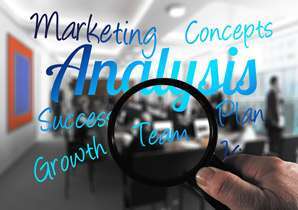
Top 10 Tools and Techniques a Business Analyst Must not Ignore
In other to function very well as a business analyst, a variety of tools and techniques are available to the analyst and more than one can be used at any point in time.
Business analysis is a set of tasks and techniques which help understand the structure and policies of organizations, and guide towards making recommendations which are to enhance the attainment of business goals.
Here are top ten tools and techniques you should not ignore to use in performing the duties of a business analyst:
1. SWOT Analysis
SWOT simply means Strength, Weakness Opportunities, and Threats.
It is often used at the initial stage by business analysts to identify the best opportunities while focusing on the strength of the establishment.
It helps the business analyst spot dangers to the organization’s goals and to improve on weaknesses.
While measuring the strengths, the analyst tries to find out the areas the organization performs best in.
He/she literarily identifies the advantages his/her organization has.
In weakness, he/she looks at the area that needs to be improved upon, by measuring performances and identifying weak spots.
In opportunities, he/she focuses on where the most opportunity exists for his/her organization by identifying the areas the organization can explore or even exploit.
While dealing with threats, the analyst examines the obstacles facing the business, especially in the areas where rivals are performing well.
2. PEST Analysis
This is Political, Economic, Sociological and Technological analysis.
It is used as a frame work to analyze external factors which may affect the organization, and it involves studying the current political situation, as well as the potential political influences on a business; national and global economic impact, and the ways the society can affect the organization, and the effects of emerging technologies on the business.
Various varieties of PEST include; STEP, STEEP, STEEPLE and PESTLE.
3. MOST Analysis
This is a tool for internal environmental analysis. It makes certain that a project is designed to fulfil four areas:
Mission: Where you want the business to reach
Objectives: what goals are likely to help you attain the mission?
Strategies: Planning options to help the organization
Tactics: How the strategies will be implemented.
4. Heptalysis
This tool helps in the early stage of businesses to run a detailed analysis of the business. It focuses on seven key areas: Execution plan, market opportunity, financial engine, product or solution, human capital, potential returns, and margin of safety.
5. De Bono’s Six Thinking Hats
This technique can be relied upon during brainstorming sessions. It helps in the generation and analysis of several options, serving as a useful tool to encourage specific kinds of thinking only. The six colors or moods are:
White symbolizing pure and logical facts
Green signifying creativity
Yellow represents optimism, bright and positive
Black means devil’s advocate or negative
Red is seen as emotional
Blue signifies control or cold.
6. CATWOE
This tool helps prompt thinking regarding the aim of a business. The acronyms when interpreted means:
Customers: The beneficiaries of the business.
Actors: The ones involved in the process of implementing the business strategy.
Transformation Process: The processes which are to be impacted by the strategy or issue.
World View: The overall and wider effect of the issue; usually the big picture.
Owner: The person who owns the process. The role he/she plays in the solution should be known.
Environmental constraints: The boundaries or challenges. You must determine how they affect the solution.
7. Five Whys
This method helps the analyst understand what is happening at a particular moment. It is used to find a main cause.
Care should be taken to answer as many as possible.
8. MoSCoW
It prioritizes requirements, and evaluating them based on valid necessities. It is comprised of:
Must have: Without which, the delivery is incomplete.
Should have: Without which, you may need to make an alternative decision.
Could have: With it, delivering satisfaction is increased.
Won’t have: May not have it now, but will like to have it in the future.
9. SCRS
This tool claims that analysis should flow from the current state requirements and higher business strategies to the solution: it simply means; Strategy, Current state, Requirements, and Solution.
10. VPEC-T
This is used to analyze the expectation of several parties, using different views of a system.
Values: What each participant holds in high regards; objectives, and beliefs.
Policies: What dictates what should be done and how.
Event: Activities that happen in the real world.
Content: The meaningful parts of documents and messages or discussions
Trust: It is of importance to establish trust.
Conclusion:
The tools and techniques discussed above can help you to achieve remarkable success as a business analyst, so make sure to learn and apply them in your work.












